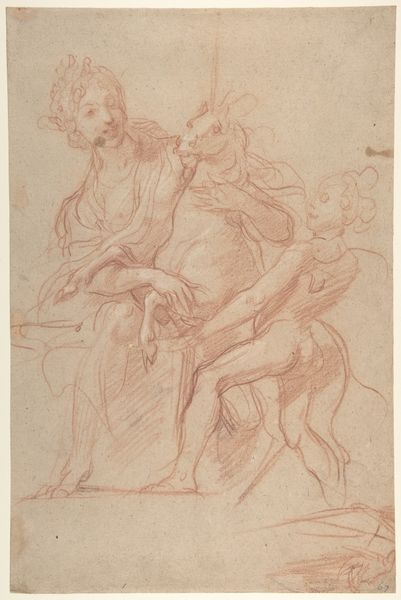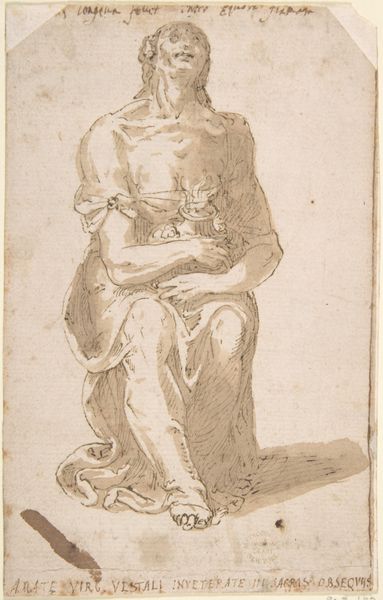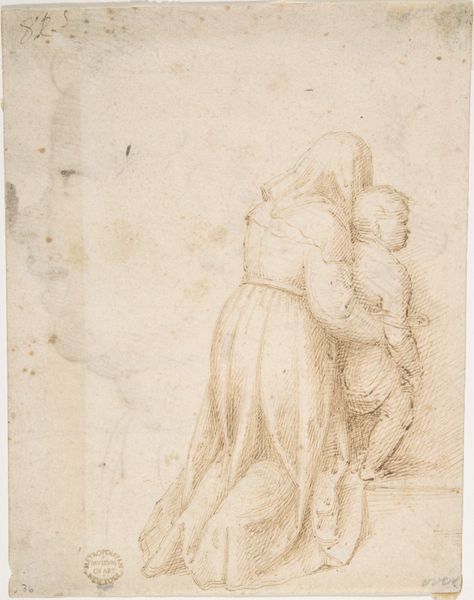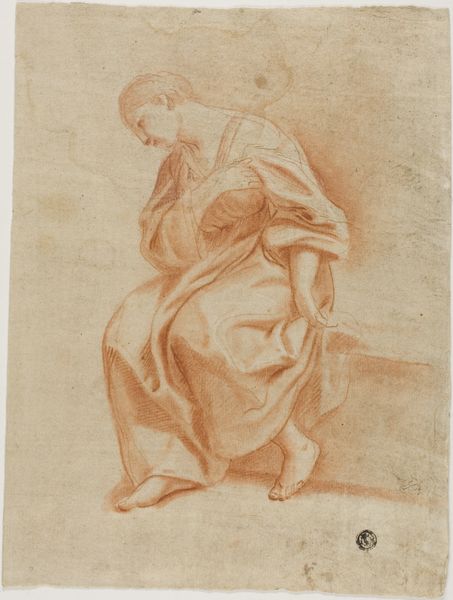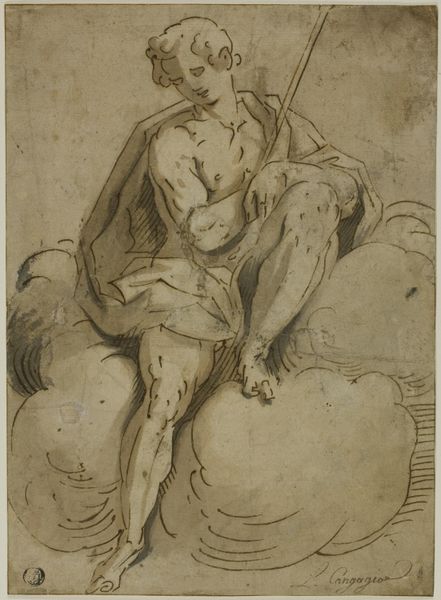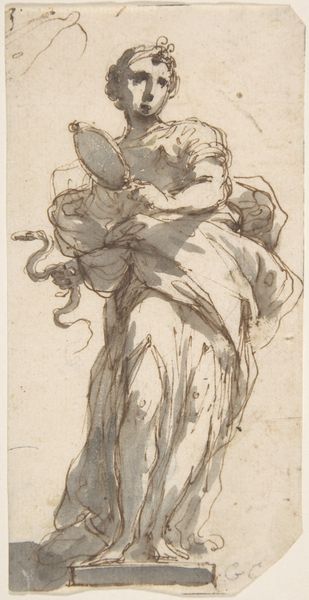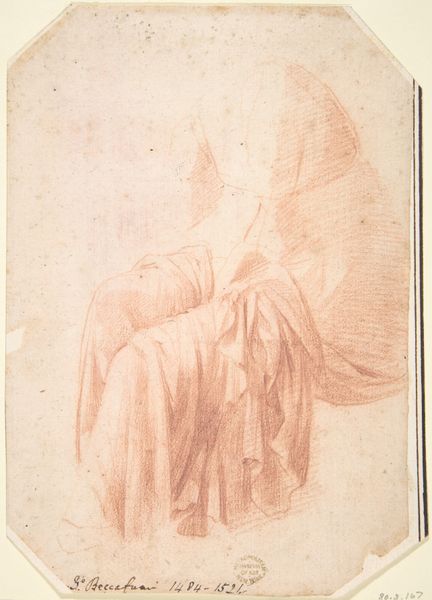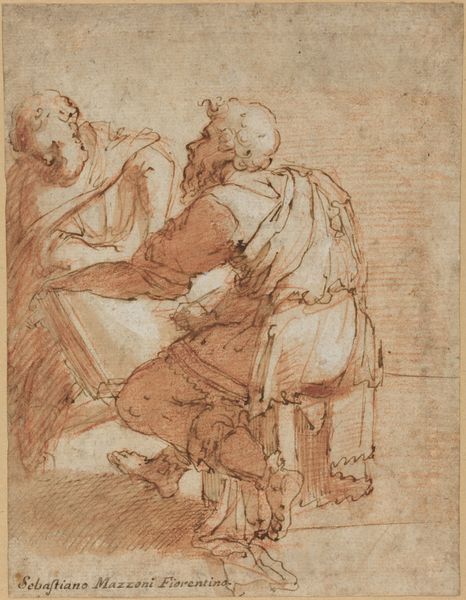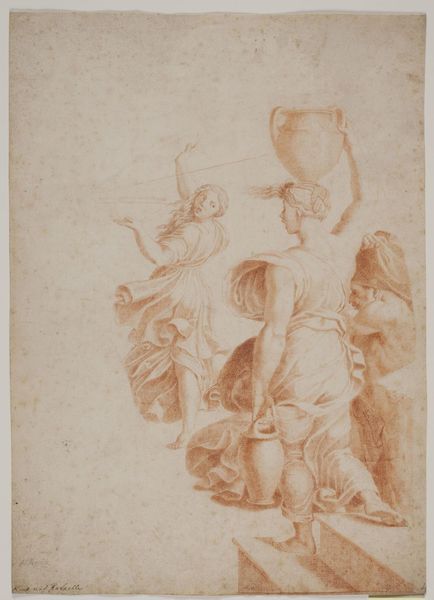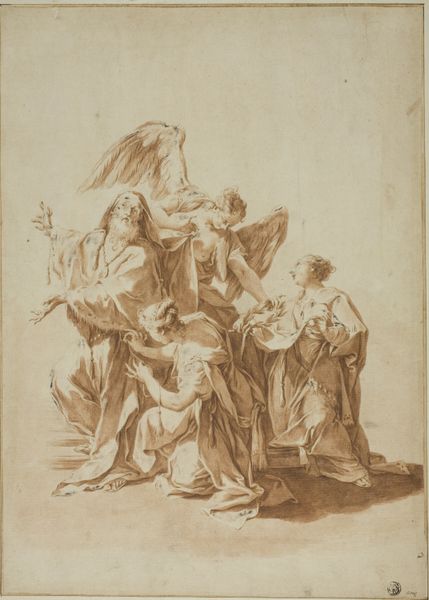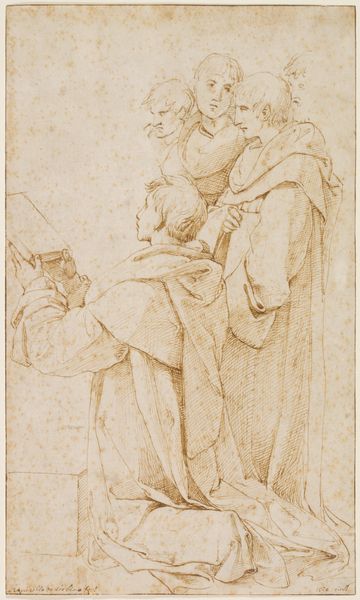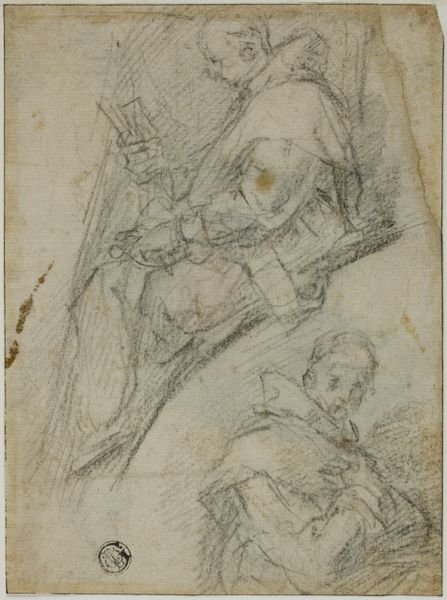
drawing, print, paper, ink, pencil, pen
#
portrait
#
drawing
# print
#
pencil sketch
#
charcoal drawing
#
figuration
#
paper
#
ink
#
pencil
#
pen
#
history-painting
Dimensions: 185 × 144 mm
Copyright: Public Domain
Editor: Right, so, this drawing is called "Virgin and Child," and on the back, there's another sketch of "Putti". It’s by an unknown artist, sometime in the past, and it uses pen, ink, and pencil on paper. I’m immediately drawn to how delicate the lines are. The artist used a really sparse approach to show light and shadow... What stands out to you in its formal elements? Art Historian: The intrinsic elegance of line is indeed noteworthy. Note the composition, however: the figures, while centrally placed, lack a sense of grounding. They almost seem to float due to the subtle use of chiaroscuro. This lack of groundedness and delicate line-work can lead to multiple interpretations; what would you hypothesize as to their intention? Editor: Hmm, perhaps they wanted to communicate something beyond the earthly realm? I'm noticing the halos now, quite faint but certainly there, reinforcing the Virgin and Child theme. Do you think the fact that it's unfinished has any bearing on our interpretation? Art Historian: Unfinished is perhaps not the most fitting term. It appears the piece is either a sketch or preparatory study; if so, note the artist's economy of strokes to denote depth, shadow, and, most intriguingly, fabric. The fall of the Virgin's drapery is skillfully captured using remarkably few lines. Are there any modern artists employing similar structural ideas with pen and paper that we know? Editor: You know, I can see some echoes of this lightness of touch in Cocteau's drawings, perhaps? Although, obviously, very different subject matter! I’ve definitely learned to appreciate the efficiency in the use of lines to express so much. Thank you for your observations. Art Historian: Indeed. I, as well, see now that, the seeming lack of resolution is not, in actuality, unfinished; rather, complete in and of itself as an aesthetic object and preliminary design.
Comments
No comments
Be the first to comment and join the conversation on the ultimate creative platform.
